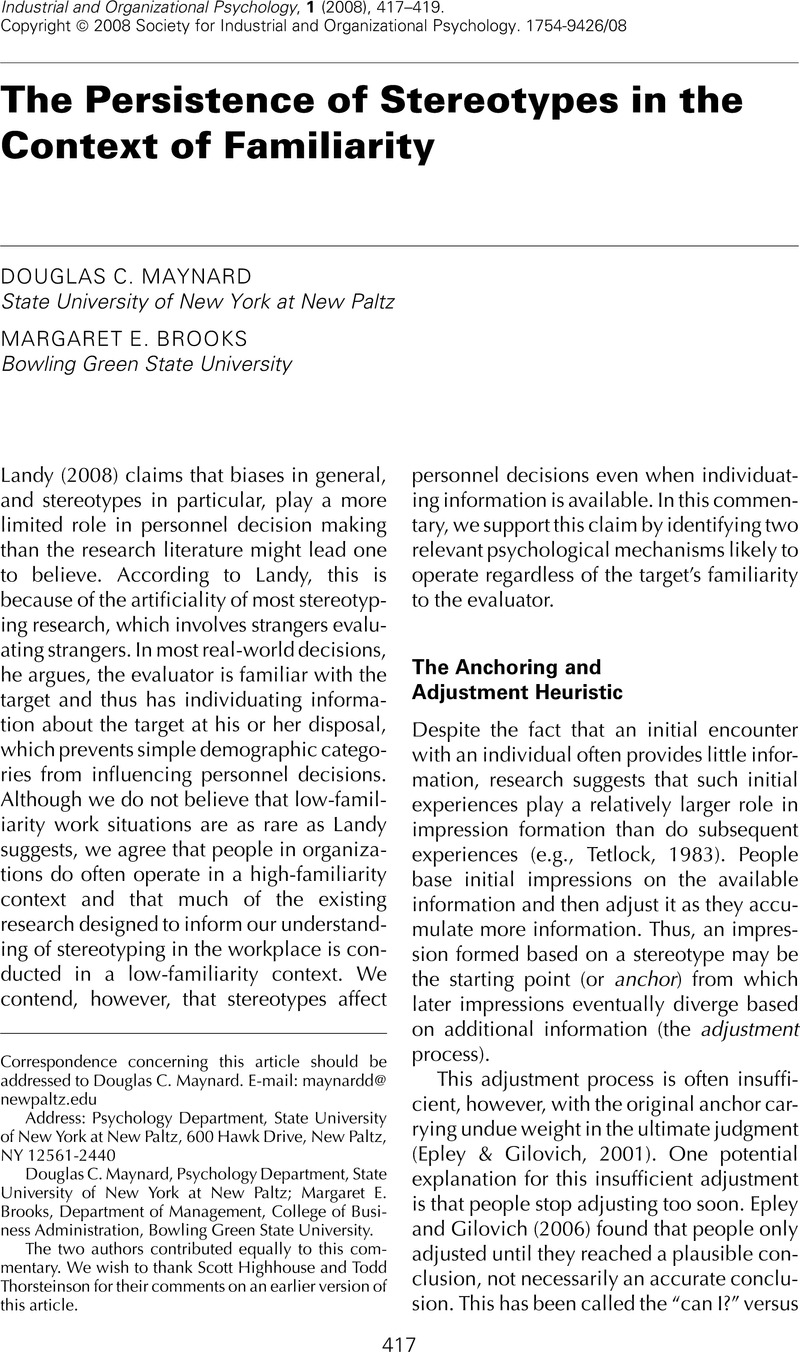Crossref Citations
This article has been cited by the following publications. This list is generated based on data provided by Crossref.
Landy, Frank J.
2008.
Stereotyping, Implicit Association Theory, and Personnel Decisions: I Guess We Will Just Have to Agree to Disagree.
Industrial and Organizational Psychology,
Vol. 1,
Issue. 4,
p.
444.
Maynard, Douglas C.
Ferdman, Bernardo M.
and
Holmes, Tabitha R.
2010.
The Psychology of Global Mobility.
p.
211.
Li Kusterer, Hanna
Lindholm, Torun
and
Montgomery, Henry
2013.
Gender typing in stereotypes and evaluations of actual managers.
Journal of Managerial Psychology,
Vol. 28,
Issue. 5,
p.
561.
Roth, Louise Marie
2016.
A Doctor’s Worth.
Social Currents,
Vol. 3,
Issue. 1,
p.
3.





